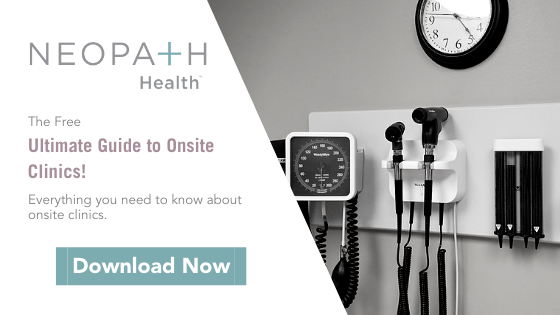One of the first and most important decisions to make regarding an onsite clinic is how it will be managed. The management model selected for an onsite clinic will have an effect on everything from the type of furniture in the waiting room to the level of experience of the clinic staff. You'll want to decide on a management model very early on in the process because the choice can affect how you implement your clinic, including construction and staffing.
According to the National Association of Worksite Health Centers (NAWHC), about 18-30% of clinics are managed solely by the employer, and 18-20% are run by hospitals or physician groups. The majority, though, are contracted out to a third-party vendor to build, staff, and manage. Not sure of the differences? Read on for a breakdown of onsite clinic management options.

Employer-Managed
An employer-managed onsite clinic means your company will have complete control and responsibility over every decision and consequence. This will essentially be an additional business unit to manage, and all clinic staff will be direct employees of your organization.
Your team will take on full responsibility for everything from day one, including building the facility or creating space for it within your current infrastructure. Decisions and planning will be required for the types of facilities and services to be provided. You will staff it from the ground-up, meaning your HR team will need to be comfortable locating and recruiting medical professionals. (Here are some tips for staffing a clinic.) This may be quite different from the type of recruiting they currently do for your company.
 Mandatory learning will be required on what it takes to manage a medical facility, including operational costs and risks of which to be aware. You'll be required to follow all compliance regulations mandated by law, such as HIPAA, so definitely be sure to study up on those in advance. You may want to look into hiring professionals to manage certain aspects of the clinic, such as a Compliance Officer or Chief Medical Officer, to help oversee clinic functions and compliance.
Mandatory learning will be required on what it takes to manage a medical facility, including operational costs and risks of which to be aware. You'll be required to follow all compliance regulations mandated by law, such as HIPAA, so definitely be sure to study up on those in advance. You may want to look into hiring professionals to manage certain aspects of the clinic, such as a Compliance Officer or Chief Medical Officer, to help oversee clinic functions and compliance.
This model offers the most flexibility to customize and create exactly what you want so long as you can figure it all out on your own.
Vendor-Managed
The vendor-managed model allows you the control of being involved directly in most or all of the decisions necessary to implement and run your onsite clinic. It also takes some of the pressure off by providing you with experts that will ensure you are set up for success. An onsite vendor will help with everything from the very beginning, including assessing if an onsite clinic is even the best option for your company.
A vendor will assist with planning and facility buildout, as well as recruitment and staffing. They may be able to tap into pre-established networks of medical professionals utilizing their connections within the field. A vendor will help assess and decide the types of services to offer to your employees, and will understand exactly what it takes to provide those services. They'll be able to provide cost projections and ROI estimates so you can make well-informed decisions.
This model offers you a massive amount of flexibility in that you are hiring a vendor to help you build exactly what you are looking for. You'll gain access to professionals that are experienced in every aspect of implementing and managing your onsite clinic. Because you are paying them to help you, they will be eager to ensure you are getting what you want, but more importantly, what your company and your employees need out of your clinic. Click here to read more about why NeoPath is the best onsite clinic vendor management partner in Minnesota.
Provider-Managed
The provider-managed model is the most restrictive as far as flexibility, and you will have less say in how things operate. However, this management style allows for the least overhead cost. This option will come with the appropriate medical professionals and typically will include infrastructure as well.

You may not have as much say in the types of services or facilities the clinic will offer to your employees insomuch as you would be choosing more of a package offering instead of customizing everything from the start. It may be more difficult to make changes to the offerings or personnel if your employees are dissatisfied or underutilizing certain aspects.
This model may also mean the clinic is near-site instead of onsite, meaning your employees will need to travel to the clinic in order to be seen instead of walking down the hall on their lunch break. There maybe a slight increase in the amount of time your employees need to take off of work in order to be seen by their providers, but it should increase employee satisfaction and overall wellness because they will have readily-available access to affordable healthcare resources and information. It removes the guesswork for them and encourages better preventative medical practices.
Regardless of which management model is selected, the NAWHC recommends that the employer (you) remain engaged in as much as possible, including provider selection, center oversight, strategic decisions, and policy direction.
.png?width=433&name=NeoPath_2019_logo_2color%20(1).png)





